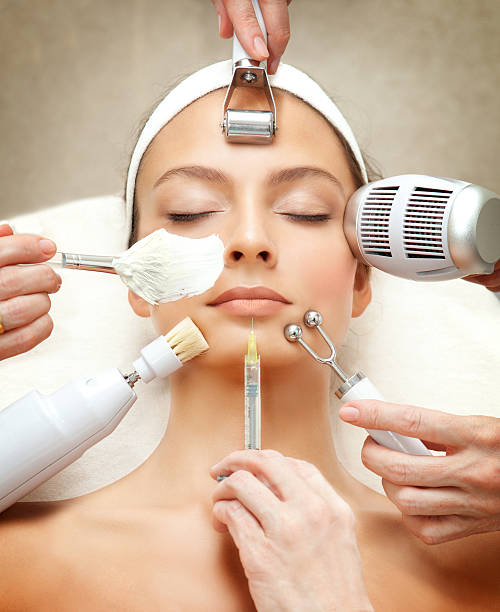As we step into 2025, the beauty industry is witnessing a surge in non-invasive treatments that promise to enhance our appearance while minimizing recovery time and discomfort. These innovative procedures cater to the desires of many looking for effective ways to rejuvenate their skin and maintain a youthful glow without resorting to surgery. This article delves into the top 5 non-invasive beauty treatments that are capturing attention, exploring their benefits, popular methods, and what you should know before trying them.
1. Skin Rejuvenation Techniques
Overview of Skin Rejuvenation
Skin rejuvenation encompasses a variety of treatments aimed at restoring a youthful appearance to the skin. This can include reducing sagging, improving texture, and diminishing discoloration or blemishes. With advancements in technology, today’s skin rejuvenation methods often prioritize safety, effectiveness, and minimal downtime, making them increasingly popular among individuals of various ages.
Popular Methods in 2024
Some of the most sought-after skin rejuvenation techniques include microneedling, radiofrequency treatments, and ultrasound therapy. Each of these methods stimulates collagen production, enhancing skin elasticity and reducing fine lines. Microneedling, for instance, utilizes tiny needles to create controlled micro-injuries, prompting the body’s healing response. In contrast, radiofrequency treatments employ thermal energy to tighten and lift the skin, while ultrasound therapy uses sound waves to promote deep tissue rejuvenation.
Benefits of Skin Rejuvenation
The primary advantage of skin rejuvenation techniques is their ability to deliver visible results with minimal associated risks. Patients often experience reduced downtime compared to surgical options, which allows them to quickly return to their daily routines. Additionally, many of these methods are customizable, enabling practitioners to tailor treatments specifically to individual skin concerns. The cumulative effects of these procedures can lead to a more youthful and radiant complexion.
2. Microcurrent Facials
What are Microcurrent Facials?
Microcurrent facials are a non-invasive treatment that uses low-level electrical currents to stimulate facial muscles. This technique mimics the body’s natural electrical signals, thereby enhancing muscle tone and promoting a firmer appearance. Typically described as a gym workout for the face, microcurrent facials are gaining traction for their ability to lift and sculpt without the use of invasive measures.
How They Work
During a microcurrent facial session, conductive gel is applied to the skin, allowing the gentle electrical currents to penetrate effectively. The treatment usually lasts around 60 minutes and can be combined with other facial services for enhanced results. This therapy not only tightens the skin but also improves blood circulation and lymphatic drainage, contributing to a healthier complexion.
Expected Results and Benefits
Patients can expect to see immediate lifting effects after their first treatment, with optimal results becoming noticeable after a series of sessions. Benefits extend beyond aesthetics; microcurrent facials can also improve skin tone and texture, reduce puffiness, and lessen the appearance of fine lines. This makes them an appealing option for those seeking a quick beauty boost without significant interruption to their daily lives.
3. LED Light Therapy
Understanding LED Light Therapy
LED light therapy employs specific wavelengths of light to penetrate the skin, targeting various skin issues. Different colors of light serve distinct purposes, allowing for versatile applications tailored to individual needs. This treatment is non-invasive, painless, and is suitable for all skin types, making it a popular choice in both professional settings and at-home devices.
Different Light Colors and Their Effects
In LED light therapy, red light is primarily used to stimulate collagen production, aiding in the reduction of fine lines and wrinkles. Blue light, on the other hand, is effective against acne, as it targets the bacteria responsible for breakouts. Green light helps to reduce pigmentation and even out skin tone, while yellow light can soothe redness and improve skin texture. This spectrum of light options allows for a comprehensive approach to skin health.
Benefits for Various Skin Types
The benefits of LED light therapy are extensive and can cater to diverse skin concerns. For individuals with acne-prone skin, the blue light can significantly reduce breakouts and inflammation, while red light therapy can promote healing and rejuvenation for aging skin. Moreover, this therapy is non-invasive and typically requires no recovery time, making it an ideal option for those with busy schedules. Regular sessions can lead to cumulative improvements, leading to a more balanced, clear, and radiant complexion.
4. Chemical Peels
Types of Chemical Peels
Chemical peels are a popular method for achieving smoother, more youthful-looking skin. They work by applying a solution to the skin that exfoliates the outer layers, revealing fresh, new skin beneath. There are three primary types: superficial peels, medium-depth peels, and deep peels. Superficial peels are ideal for those seeking minor improvements, while deep peels can address more significant skin concerns.
Choosing the Right Peel for You
Selecting the appropriate chemical peel depends on your skin type and the specific concerns you wish to address. Superficial peels often consist of alpha-hydroxy acids (AHAs) or beta-hydroxy acids (BHAs) and are suitable for all skin types, while medium-depth peels typically utilize trichloroacetic acid (TCA) to target sun damage, fine lines, and moderate acne scars. Deep peels, which utilize phenol, require more downtime and are reserved for more severe skin issues.
Benefits and Recovery Process
The benefits of chemical peels extend beyond enhanced appearance; they also promote increased collagen production and skin cell turnover. Patients can expect to see improvements in texture, tone, and the reduction of blemishes or pigmentation issues. Recovery time varies depending on the depth of the peel, with superficial peels requiring minimal downtime, while deep peels may necessitate several weeks for the skin to fully heal. Proper post-peel care is crucial for optimal results and to minimize the risk of complications.
5. Popularity of At-Home Devices
Rise of At-Home Beauty Treatments
The trend toward at-home beauty treatments has surged, propelled by technological advances that make effective skincare accessible to the general public. Devices such as handheld LED masks, microcurrent tools, and at-home laser systems allow individuals to perform professional-grade treatments from the comfort of their own homes. This shift caters to a growing demand for convenient, non-invasive options that fit seamlessly into busy lifestyles.
Top Devices to Consider in 2025
In 2025, several at-home beauty devices are set to dominate the market. Leading options include LED masks for skin rejuvenation, microcurrent devices for facial lifting, and tools for at-home microneedling. These devices often come with user-friendly interfaces, allowing individuals to customize their treatments according to their skin type and goals. As with any beauty regimen, it is essential to research and select the right devices suited to personal needs and skin conditions.
Pros and Cons of At-Home Devices
While at-home devices offer convenience and affordability, they also come with certain drawbacks. The primary advantage is the ability to perform treatments at your own pace and convenience, often leading to cost savings over time compared to frequent spa visits. However, the effectiveness of at-home devices can vary, and misusing them could lead to adverse effects. For optimum results, it’s vital to follow instructions carefully and consider seeking professional guidance before beginning any new treatment regimen.
Conclusion
As the beauty landscape continues to evolve, non-invasive treatments are emerging as a preferred choice for many seeking to enhance their appearance without the complications of surgery. From skin rejuvenation techniques to innovative at-home devices, the options available in 2024 are diverse and tailored to meet various skin needs. Understanding the benefits, processes, and potential outcomes of these treatments can empower individuals to make informed decisions about their skincare journeys.
FAQs
What are the most popular non-invasive beauty treatments?
The top non-invasive beauty treatments include skin rejuvenation techniques, microcurrent facials, LED light therapy, chemical peels, and at-home beauty devices. Each offers distinct benefits tailored to various skin concerns.
How long do the results last for non-invasive treatments?
Results can vary based on the type of treatment and individual skin conditions. Generally, non-invasive procedures provide temporary results, with maintenance treatments recommended every few months for optimal effects.
Are at-home beauty devices safe to use?
At-home beauty devices can be safe when used according to the manufacturer’s instructions. However, improper use may lead to adverse effects, so it’s crucial to educate yourself before starting any new treatment.
Will I need downtime after these treatments?
Most non-invasive treatments involve little to no downtime, especially methods like microcurrent facials and LED light therapy. However, some procedures like chemical peels may require recovery time depending on the depth of the peel.
Can non-invasive treatments replace surgical options?
While non-invasive treatments can provide significant improvements in skin health and appearance, they may not fully replace surgical options for individuals seeking dramatic changes. It’s essential to consult with a qualified professional to explore the best options based on individual goals.

